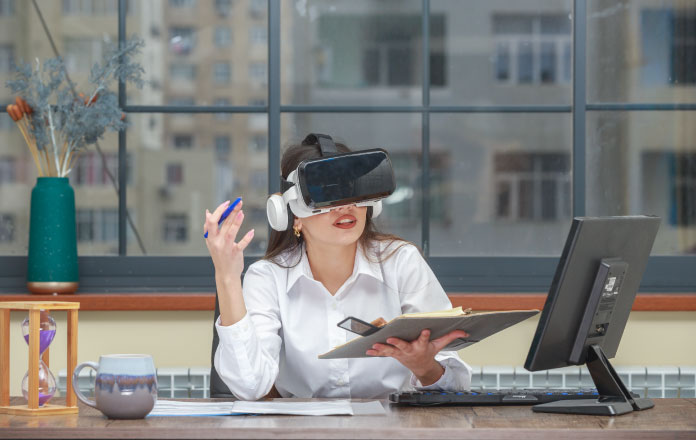In the ever-evolving landscape of technology, Augmented Reality (AR), Virtual Reality (VR), and Extended Reality (XR) have emerged as transformative technologies, reshaping the way we interact with the digital and physical worlds. Even though these terms are frequently used synonymously, they refer to different experiences and functions. Let’s delve into the nuances that set AR, VR, and XR apart.
Virtual Reality (VR): Immersed in a Digital Realm
VR is a technology that creates a completely artificial environment, isolating users from the real world and immersing them in a computer-generated one. It is typically achieved through specialized VR headsets that cover the user’s field of vision, blocking out the physical surroundings. In the VR environment, users can interact with 3D objects and navigate through a computer-generated space as if they were physically present. VR is commonly used in gaming, training simulations, and virtual tours, providing users with an unparalleled sense of presence in a digital world.
Augmented Reality (AR): Overlaying Digital onto Reality
AR, on the other hand, enhances the real world by overlaying digital information onto it. AR technology supplements the user’s environment with computer-generated content, usually viewed through smartphones, tablets, or AR glasses. Unlike VR, AR doesn’t replace the real world but enhances it by adding contextual information, graphics, or interactive elements. AR applications range from gaming and navigation to education and maintenance, seamlessly integrating digital elements into the user’s everyday surroundings.
Extended Reality (XR): The Umbrella Term
Extended Reality (XR) is an umbrella term encompassing AR, VR, and other reality-altering technologies. XR is a comprehensive concept that includes complete immersive technologies designed to extend and enhance human perception and interaction. It blurs the lines between the physical and digital worlds, creating a continuum that ranges from completely virtual to entirely real experiences. XR acknowledges the interconnectedness of AR and VR, recognizing that these technologies can work in tandem to provide users with more versatile and comprehensive experiences.
The key differentiator with XR is its inclusive nature, acknowledging that reality is not a binary choice between the physical and the virtual but exists on a spectrum. XR seeks to offer users a seamless blend of real and digital experiences, adapting to the specific needs of each application.
Practical Applications: Where Each Shines
Understanding the differences between AR, VR, and XR becomes even more apparent when considering their practical applications.
- VR: Gaming and simulations are the primary domains where VR shines. It offers users an unparalleled immersion, transporting them to fantastical worlds or replicating real-world scenarios for training purposes.
- AR: Navigation apps, retail experiences, and educational tools often leverage AR technology. By enhancing the real world with additional information, AR proves valuable in assisting users in their daily lives and providing contextually relevant data.
- XR: XR, as the overarching term, is versatile and finds applications across various industries. From collaborative work environments and medical training simulations to interactive museum exhibits, XR accommodates a wide range of use cases by blending elements of both AR and VR.
While AR, VR, and XR may seem like overlapping concepts, each term represents a distinct approach to altering our perception and interaction with the world. VR immerses users in a digital environment, AR enhances the real world with digital overlays, and EX is the inclusive umbrella term that acknowledges the interconnectedness of AR and VR. The potential for creative and immersive experiences is endless as these technologies develop further, providing a window into the direction that human-computer interaction will go.





